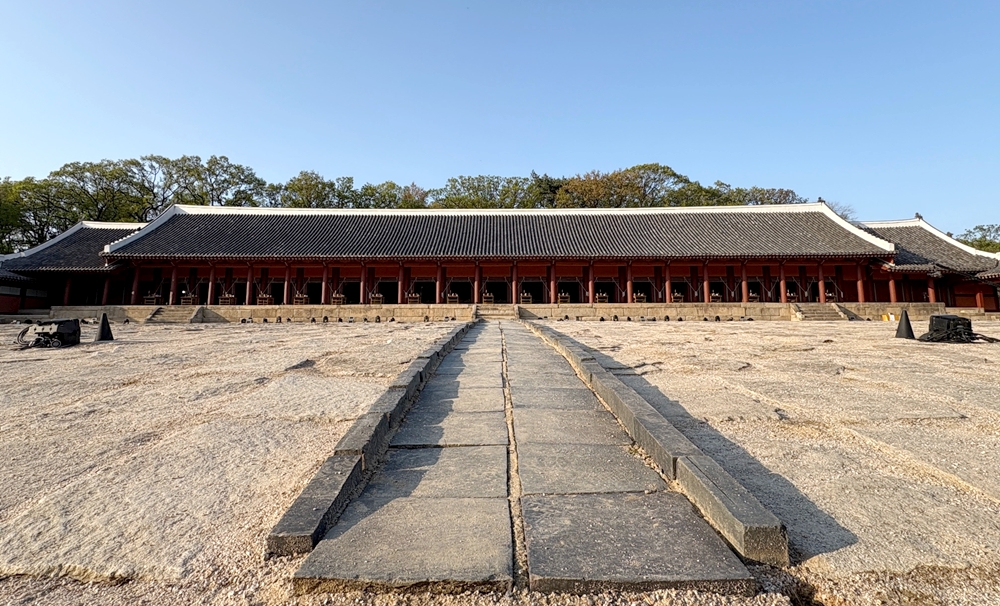Information Center
- Main page
- Information Center
- Government News
Government News
- Source
- korea.net
- Date
- 2025.04.23

This is Jeongjeon Hall of Jongmyo Shrine after renovation. (Charles Audouin)
By Charles Audouin
Jeongjeon Hall, the central building at the UNESCO World Heritage Site Jongmyo Shrine, on April 20 was reopened to the public after five years of renovation.
From 2020, the Korea Heritage Service had the roof lifted and all the factory-made tiles replaced with handmade ones produced via traditional techniques. The cement mortar in front of the hall was also replaced with handmade tiles.
Jeongjeon is considered a sacred place where royal ceremonies have been held for about 600 years since Joseon Dynasty King Taejo established the shrine in 1395.

A procession to mark the return of ancestral tablets from the royal courts of the Joseon Dynasty (1392-1910) and the Korean Empire (1897-1910) is held on April 20 in front of Gwanghwamun Gate in Seoul's Jongno-gu District, going from Changdeokgung Palace to Jongmyo Shrine. (Yonhap News)
A reenactment of the hwanan (reenshrinement) ceremony, in which the ancestral tablets of Joseon kings and queens temporarily kept at Seonwonjeon Hall of Changdeokgung Palace were returned to their original places, was held in central Seoul that day.
About 1,100 people were part of the welcoming procession stretching 3 1/2 km that started from Changdeokgung's Geumhomun Gate, passed through the Gwanghwamun area, Saejongdae-ro Road and Jongno and reached Jongmyo Shrine.
Highlights of the procession were shinyeon, palanquins used to move the tablets outside the palace; shinyeo, palanquins used to carry the tablets within the palace; and hyangyongjeong, palanquins who transported incense burners and sticks used in ancestral rites.

A ceremony to mark the safe return of ancestral tablets is held on April 20 at Jeongjeon Hall of Jongmyo Shrine in Seoul's Jongno-gu District. (Charles Audouin)
After the procession reached the shrine, a welcoming ceremony was held to mark the tablets' safe return.
Incense, candles and other ritual items were placed on the altar in front of Jeongjeon's 19 chambers, all of which were wide open. The solemn ritual followed traditional procedures, with performers kneeling, bowing four times and burning three incense sticks to the king and queen.

Performers on April 20 walk up the stairs after washing their hands in a ceremony to mark the safe return of Joseon Dynasty's royal ancestral tablets at Jongmyo Shrine in Seoul's Jongno-gu District.
In addition, Jongmyo Jeryeak, or royal ancestral ritual music, will be performed nightly from April 24 to May 2 at Jeongjeon. The royal ancestral rite Jongmyo Chunhyang Daejae, which is designated Intangible Cultural Heritage along with the music, will be held on May 4 at the hall.
caudouin@korea.kr